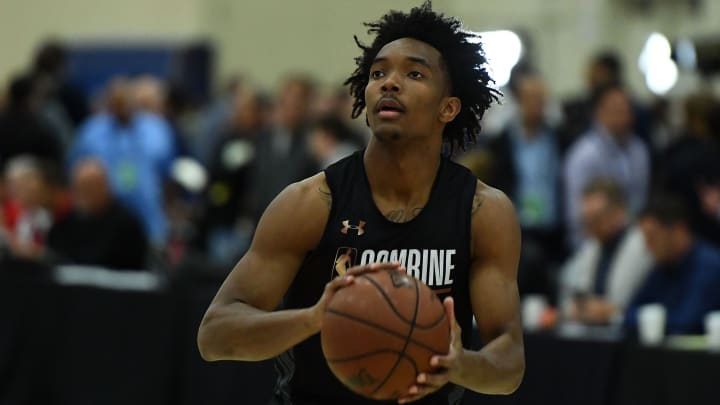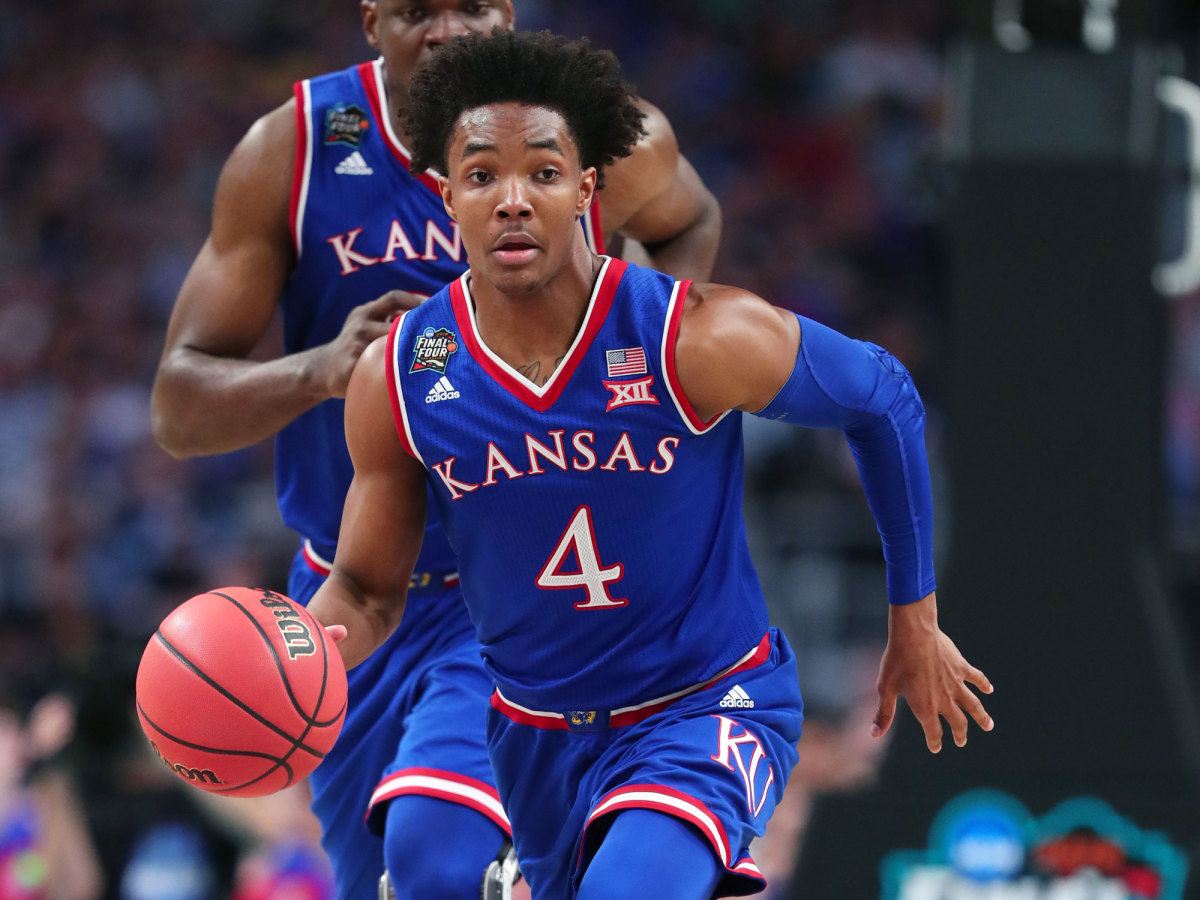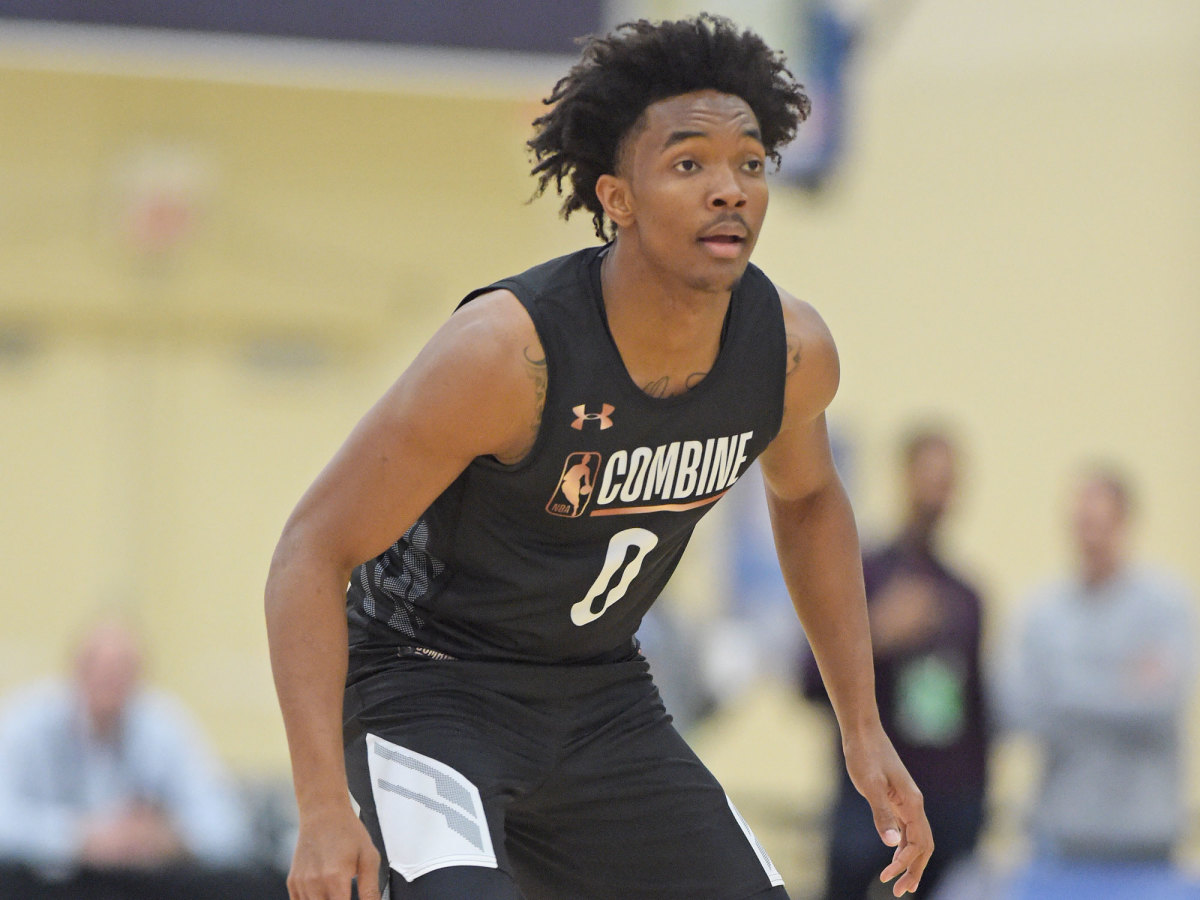Devonte Graham and the Importance of Patience

At 17, Devonte Graham got ahead of himself. As an undersized point guard out of Raleigh, N.C., Graham didn’t have offers from big-name programs going into his senior season, and in November of that year, he signed with Appalachian State. Three months later, near the end of his team’s run to the North Carolina class 4A state championship, Graham realized his mistake. He was still growing, still developing as a point guard, and he thought he was good enough to play for a major-conference team. That’s when Graham went back to Appalachian State and coach Jason Capel and asked for his release.
Capel said no. He suspected tampering, although none was ever proven, and in a statement, the school explained its decision: “If he thought that a more desirable situation might arise in the future, he also had the option to wait until the late signing period in April to make his college choice."
And yes, Graham could have waited. But it’s understandable for a player to sign early, concerned about securing a space, any space, on a team and at a school. Minimize uncertainty, shore up a future. That’s what Graham tried to do—until he realized he might be selling his future short. And so he reversed course, deciding that instead of attending Appalachian State in the fall of 2013, he’d enroll at prep school. Graham would, in effect, wait the university out, pushing off a sure thing for the murkiest idea of a future.
2018 NBA Mock Draft 7.1: Projecting All 60 Picks Post-Combine
Just because a player enrolls at a prep school, it doesn’t mean he shirks his commitment to whatever college he’s signed with. In fact, many players who enroll at Brewster Academy, where Graham spent his fifth high-school season, are already committed to (or on the radar of) major-conference programs, and they’re spending the year working on academics or refining their game. In Graham’s case, he was pushing off college on the slim hope that Capel might let him out of his National Letter of Intent.
Five years later, in interviews at the NBA draft combine, Graham says teams have asked him about that decision—which seems like an eternity ago. In Wolfeboro, N.H., Brewster coach Jason Smith says that years-ago decision has also resurfaced in recent weeks, and one NBA team who called on background asked him a question that makes him laugh as he retells it: “Has Devonte ever had to face adversity?”
“I kind of paused,” Smith explains, “and said, ‘The whole year at Brewster was a pretty adverse situation.’ As of early May, he did not know what his future was going to entail. He didn’t know if he was going to lose a year of eligibility, if he’d have to go to App State, if he’d have to go to junior college, and despite all the unknowns… he stayed focus on being the best student and the best citizen.”
Nine College Seniors Who Could Be NBA Sleepers
Spoiler: Graham didn’t lose a year of eligibility. He didn’t go to junior college. Instead, he landed at Kansas and now looks certain to be drafted, possibly as an early second-round pick after an impressive combine performance last week. He's currently listed at No. 44 in The Front Office's latest mock draft. Will he be an instant star? Probably not; at 23, his game is less about upside than known quantities, of which Graham has plenty to be confident in—and with his current skill set, he looks the part of a point guard who could enjoy a level of staying power in the league.

In April of Graham’s prep school year, Appalachian State released him from his commitment, almost a year and a half after he initially signed. Capel had been fired after a 9–21 season, and new coach Jim Fox agreed to let Graham seek greener pastures. Still, the timing wasn’t optimal. By late spring each year, most schools have rounded out their rosters, and the 6’1”, 180-pound guard, a four-star recruit, wasn’t the kind of player schools were holding a spot open for, on a hope and a prayer for his release. But that same month, Kansas got news that another former Brewster point guard Naadir Tharpe planned to transfer. A spot was open on the Jayhawks roster, and it went to Graham, a player Bill Self’s staff hadn’t recruited at all during his high school days.
“This was early May, and at that point, there’s not a lot of high-level prospects available,” Smith says. “It’s like, oh, he’s just getting this interest because of supply and demand. There’s not enough point guards available. I would articulate to people, yeah, he can play pretty much anybody, anywhere.”
Over four years at Kansas, Graham proved that, playing three seasons alongside fellow point guard Frank Mason, who was the Jayhawks’ primary ball-handler. In his fourth year as a starter, with Mason off to the NBA (he was the No. 34 pick, to the Kings, last summer), Graham slid seamlessly into his role, the main difference, teammates Sviatoslav Mykhailiuk and Udoka Azubuike say, being his temperament on the court. Where Mason was quiet, stoic even, Graham was ebullient and chatty, galvanizing teammates with his words as well as his game.
At senior night, he was moved to tears in his speech, although it’s Kansas’s fans who probably should have gotten misty at the thought of Graham moving on. In a season when the Jayhawks were projected to take a step back, Graham’s play led them to the Final Four, finishing the year averaging 17.3 points, 4.0 rebounds and 7.2 assists per game.
“I think I’m one of the best play-making point guards in the draft,” Graham says. “I can play off the ball, shoot the ball pretty well, and I’ve got experience. I know how to win. I’m a winner. I’ve been in a lot of situations that guys haven’t been in and played in a lot of big games that guys haven’t.”

That experience will be Graham’s selling point, although it comes in a draft process that often values anything but. In 2017, 10 of the top 11 picks were college freshmen; the one exception was an international player. The first senior to come off the board was at No. 29, Colorado’s Derrick White, making last year the latest the first senior taken had been picked since the institution of the one-and-done rule before the 2006 draft. (Over those 12 drafts, the median pick for the first senior has been at No. 11.)
Still, Graham didn’t even submit his name to the NBA Undergraduate Advisory Committee a year ago for a grade, he was so resolved to return to Kansas and prove he could start as a true point guard. Four years after he committed too soon, Graham knew better. “I wasn’t always 6-foot-2,” he says. “I wasn’t always the best player on my team. I just had to wait. Even in AAU, I wasn’t playing, so I just had to wait out my turn, and then I got playing minutes, and then I started starting. It was just something that kind of developed over the years. Patience is a virtue.”

But will that benefit him next month, the wisdom he accrued in four years starting for Self, in two Elite Eight runs and one Final Four run? Graham says teams aren’t asking him about his reasoning behind staying four years, and when he thinks about the fact that whatever team he’ll join will have players younger than he is with league experience, he laughs. He’s known that for a while; after all, his college roommate Kelly Oubre, who’s almost a year younger than he is, will be in his fourth pro season by the time Graham debuts as a rookie.
For teams wanting the most out of every contract they issue, Graham’s age definitely won’t work in his favor, and this year’s draft looks like another in which the first senior won’t come off the board until several past the lottery. “I don’t know how to sell patience,” Graham jokes, but what he can sell is the idea that he’s the perfect example of the college system (gasp) working. In a time where top players can drift from school to school, and even prep school to prep school, and colleges can be just a brief layover, Graham looked like he might be on the path to a transient career when he enrolled at Brewster.
Stay or Go: An Agent’s Perspective on NBA Draft Early Entry Decisions
“They always have that talk about how four-year guys don’t get as much credit,” Graham says. “The league is all about potential and these young guys. You can’t go wrong with what you did over four years. No regrets with me staying four years. I think that was the best decision that I ever could have made.”
It’s easy to envision a world in which Graham, still bound to Appalachian State, would have had to go to junior college or to transfer, where he might have never laid down roots, where he might have bolted to the NBA too early, where he might already be out of it, overseas or in the G-League. Instead, he played something close to a storybook career as a four-year starter whose last college game came in the Final Four. It was a career worth waiting for.
